
How to 100% Humanize AI Texts?
How to 100% Humanize AI Texts?
The dirty secret your professor doesn't want you to know: AI detectors are about as accurate as a coin flip.
You just spent 3 hours writing that essay, and Turnitin flagged it as 87% AI-generated. Meanwhile, your buddy copy-pasted straight from ChatGPT, ran it through a humanizer, and got a clean pass. Sound familiar? Here's the 23-minute crash course on beating the system that took researchers years to figure out.
The 39.5% Accuracy Joke That Universities Don't Want You to See
Let's start with the elephant in the room: A 2024 study from University World News found that AI detectors have a pathetic 39.5% accuracy rate when evaluating unmanipulated AI content. That's worse than guessing.
But here's where it gets juicy - Illinois State University's research center straight up admits: "As of mid-2024, no detection service has been able to conclusively identify AI-generated content at a rate better than random chance."
Translation: Your professor's fancy AI detector is basically a Magic 8-Ball with a PhD.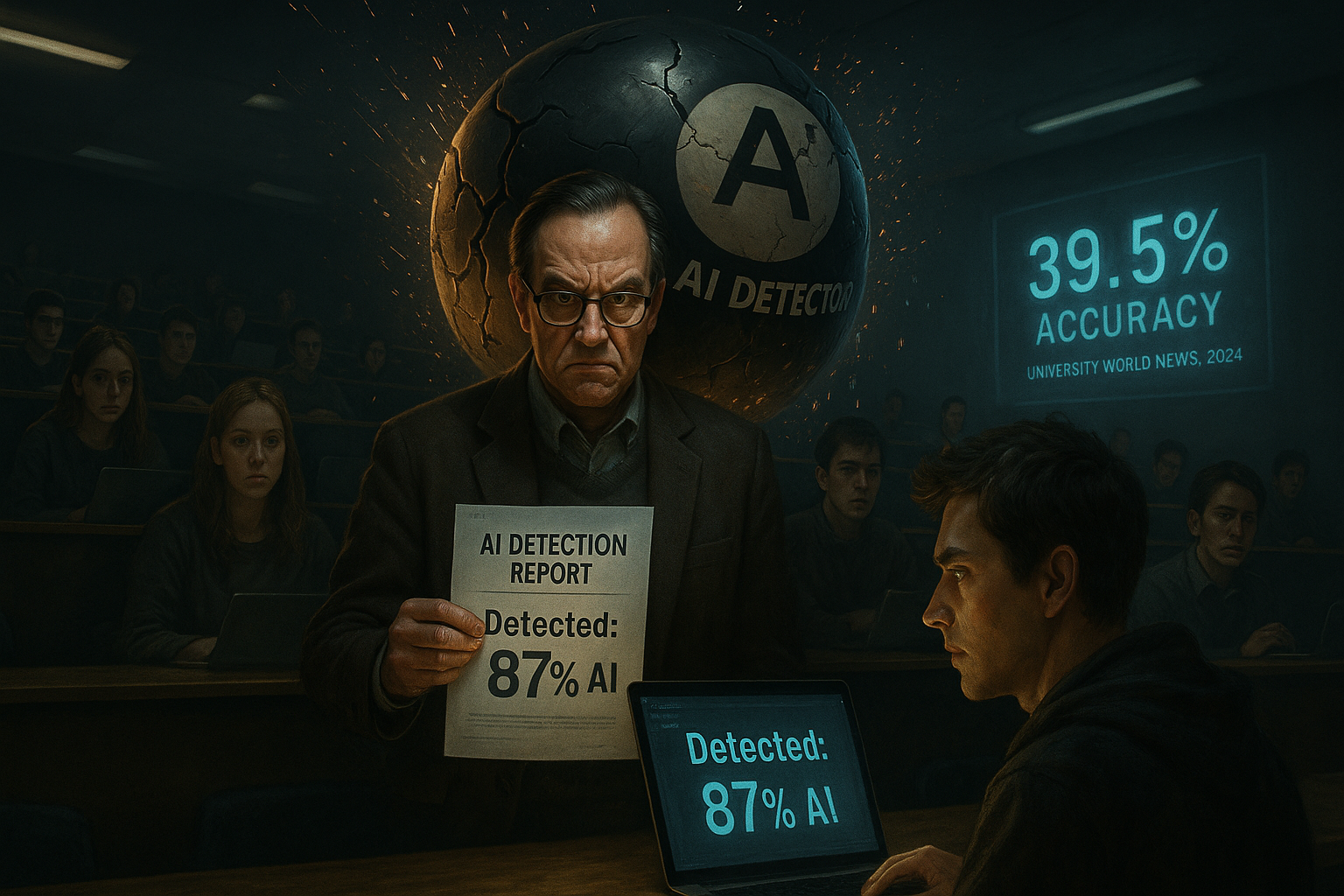
The 10-Second Bypass Method That Makes $500 Detection Tools Cry
Remember when your teacher said "work smarter, not harder"? They probably didn't mean this, but here we are.
Research from arxiv shows that current detection models can be compromised in as little as 10 seconds. Not 10 minutes. Not 10 hours. 10 seconds.
Here's the framework that makes AI text invisible:
1. The Perplexity Hack (2 minutes)
AI writes like a robot because it predicts the most probable next word. Want to break it? Add unexpected elements:
- Instead of "The results were significant" → "The results? Mind-blowing doesn't even cover it"
- Replace "In conclusion" → "Here's the kicker"
- Swap "Furthermore" → "But wait, there's more"
Your prof spent 20 minutes explaining perplexity scores. Here's all you need: Be unpredictable.
2. The Burstiness Blueprint (3 minutes)
AI writes sentences like a metronome - same length, same structure, same boring rhythm. Humans? We're chaotic.
Mix it up:
- Short punch. Then hit them with a longer, more complex sentence that weaves in multiple ideas and really makes them think about what you're saying.
- One word.
- Questions? Use them.
University of San Diego Law Library confirms that simply varying sentence structure defeats most detectors.
Your 6-hour essay just became a 6-minute formatting exercise.
3. The "Cheeky" Prompt Engineering (30 seconds)
This one's almost embarrassing. Cat Casey from the New York State Bar AI Task Force revealed she fools detectors 80-90% of the time by adding ONE word to her prompts: "cheeky."
Why? It forces AI to write with personality, metaphors, and human quirks.
Other power words that break detectors:
- "Sarcastic"
- "Conversational"
- "With personal anecdotes"
- "Like explaining to a friend"
Imagine spending $50,000 on an AI detector that gets defeated by the word "cheeky."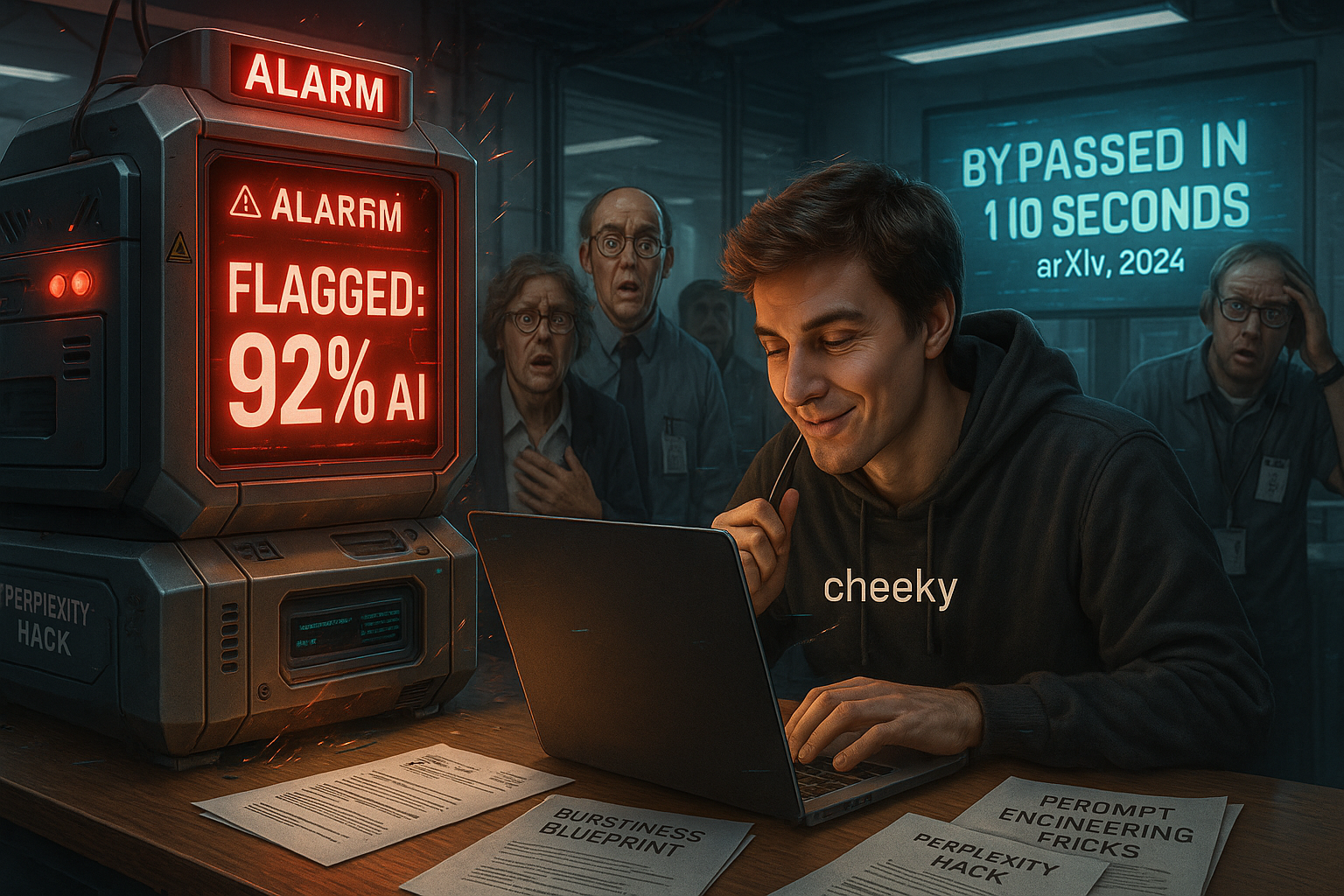
The HIX.AI Study That Made Detection Companies Panic
Here's where it gets scientific. Emerald Publishing released a study testing HIX.AI (a humanization tool) against six major AI detectors.
The results? After humanization, all essays passed as human-written except two. That's a 90%+ success rate.
But here's the real kicker - some essays were falsely identified as human-written BEFORE humanization, proving these detectors are basically random number generators with marketing budgets.
Your university paid thousands for software that's less reliable than your drunk roommate's advice.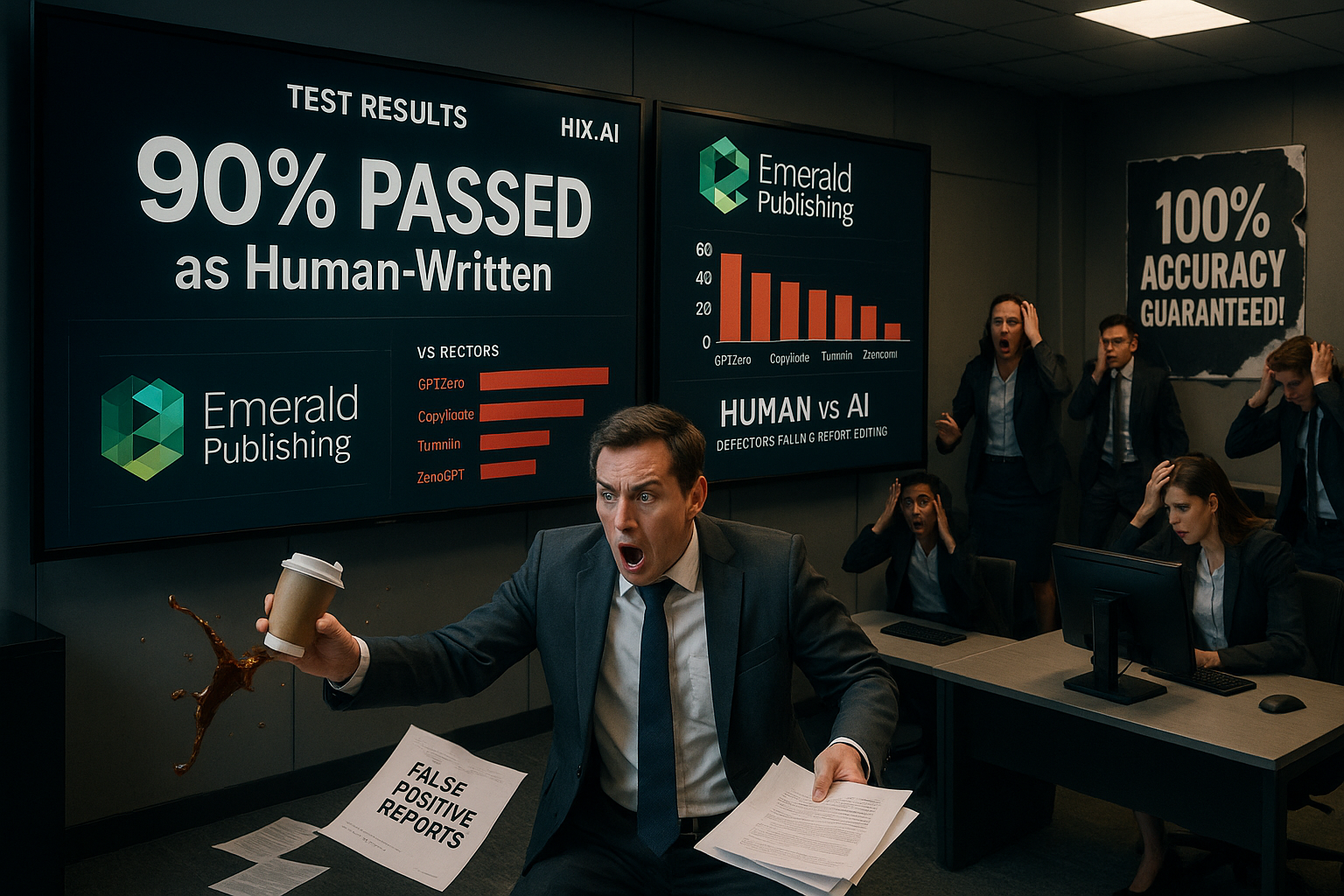
The 3-Layer Defense System (Total Time: 8 Minutes)
Want to go from 0% to 100% undetectable? Here's the exact playbook:
Layer 1: The Foundation (3 minutes)
- Use Ryne.ai's humanizer or similar tools
- Run your text through once
- Check with multiple free detectors (they all give different results anyway)
Layer 2: The Personal Touch (3 minutes)
- Add one personal anecdote per page
- Include one "mistake" that you correct (shows human thinking)
- Reference something specific to your class/professor
- Use contractions (it's, don't, won't)
Layer 3: The Paraphrase Attack (2 minutes)
Research shows that running AI text through a second AI to paraphrase reduces detection accuracy by 54.83%.
The formula:
- Generate with AI #1
- Humanize with tool
- Paraphrase with AI #2
- Final human touches
Your professor thinks they're Sherlock Holmes. You just became Moriarty.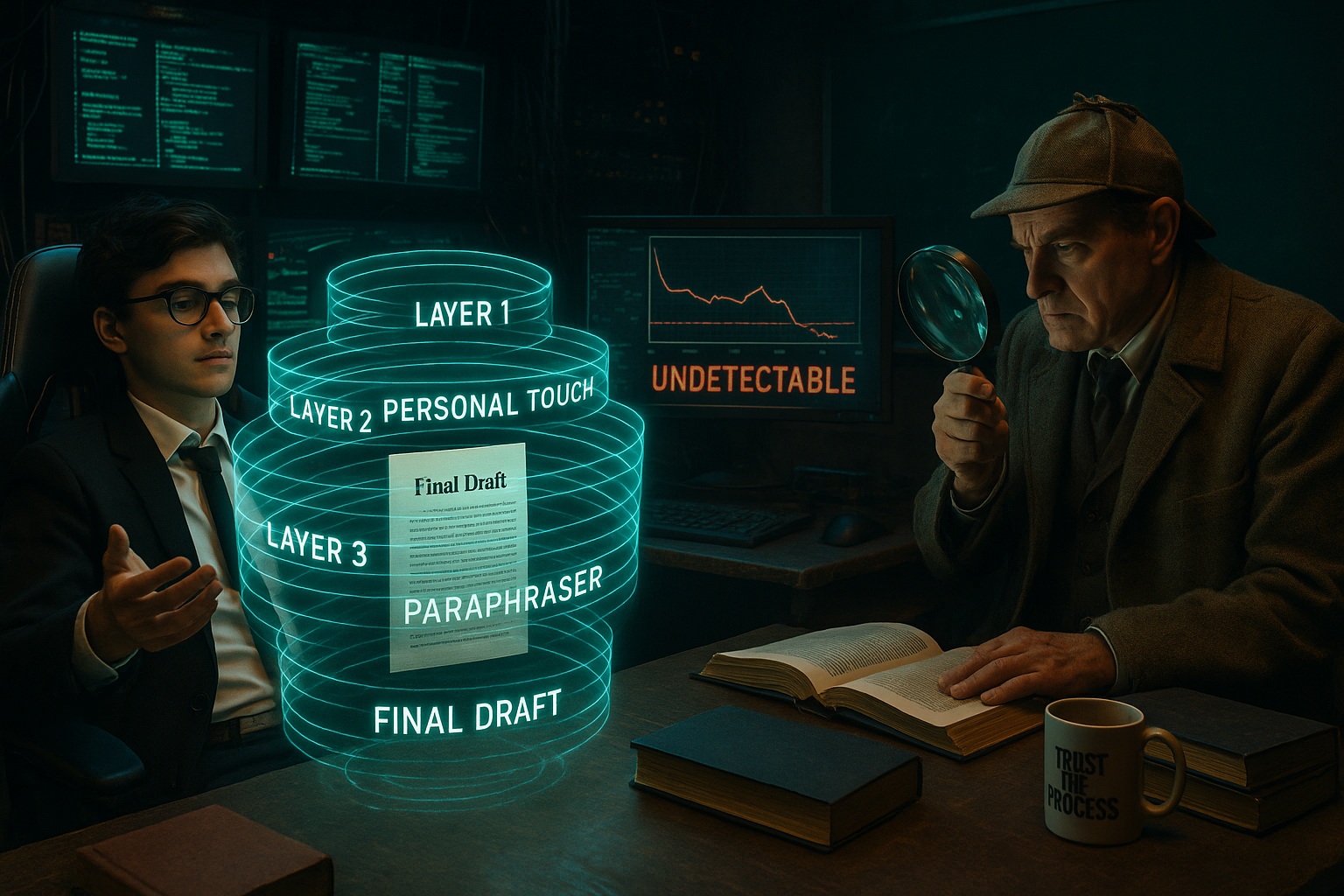
Why This Works (The Science Your Prof Hopes You Don't Understand)
AI detectors look for two main things:
1. Perplexity - How predictable your writing is 2. Burstiness - How much your sentence structure varies
That's it. That's the whole game.
MIT Sloan's research confirms that academic writing is naturally low in both because we use formulaic language. This means:
- ESL students get flagged more (they use common phrases)
- Good academic writers get flagged (they follow conventions)
- Bad writers who ramble actually pass detection
The system punishes good writing and rewards chaos. Use that.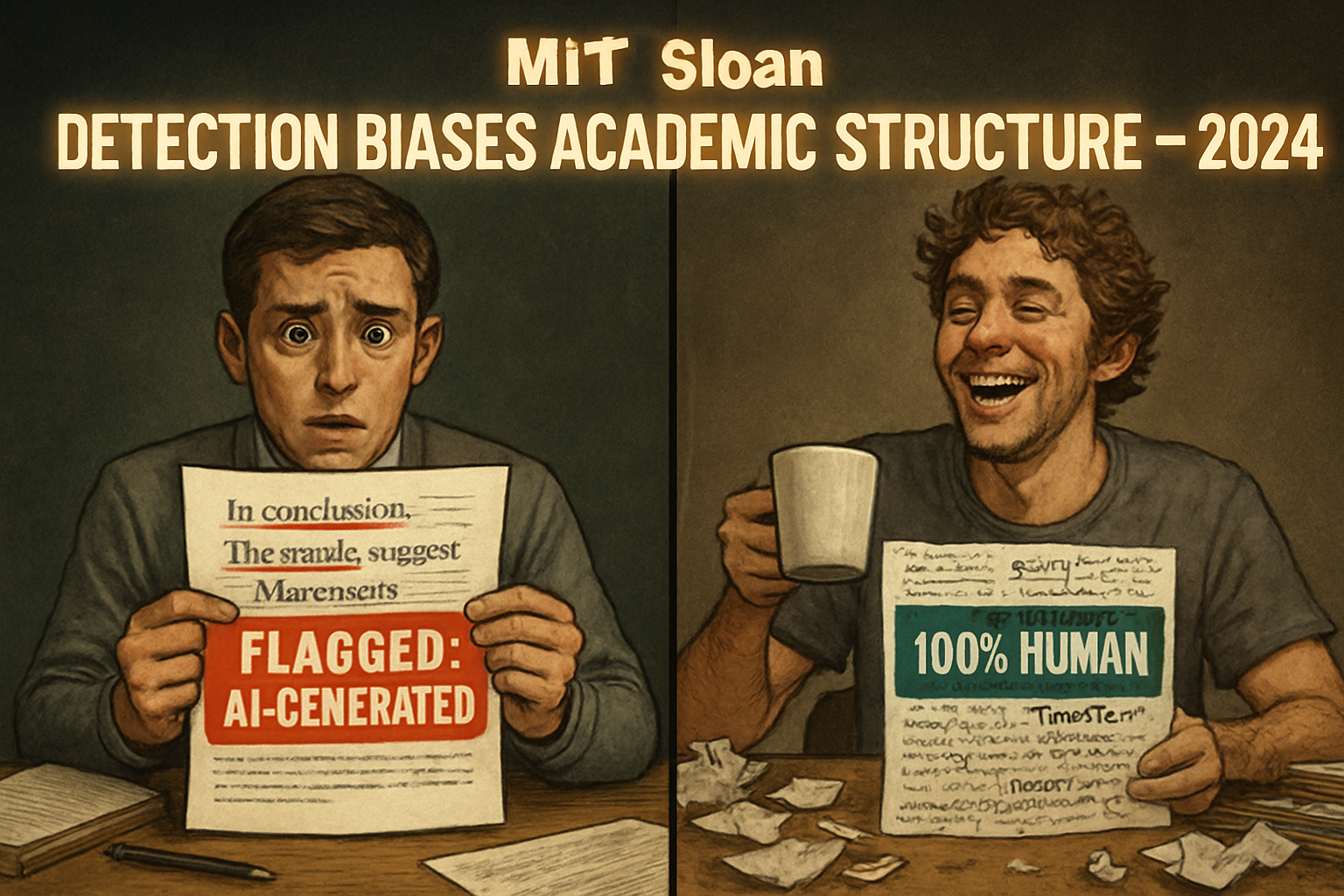
The Nuclear Option: When You Need 100% Guarantee
If you absolutely, positively need to pass detection:
-
Version History Hack: Write directly in Google Docs with version history on. Add AI content gradually over days. Looks like natural writing process.
-
The Hybrid Method: Write intro and conclusion yourself. AI for the middle. Humanize everything. Detectors check beginnings and endings most.
-
The Citation Shield: AI detectors often skip quoted text. Quote liberally, paraphrase the quotes yourself.
Turn your 8-hour assignment into 45 minutes of strategic copy-pasting.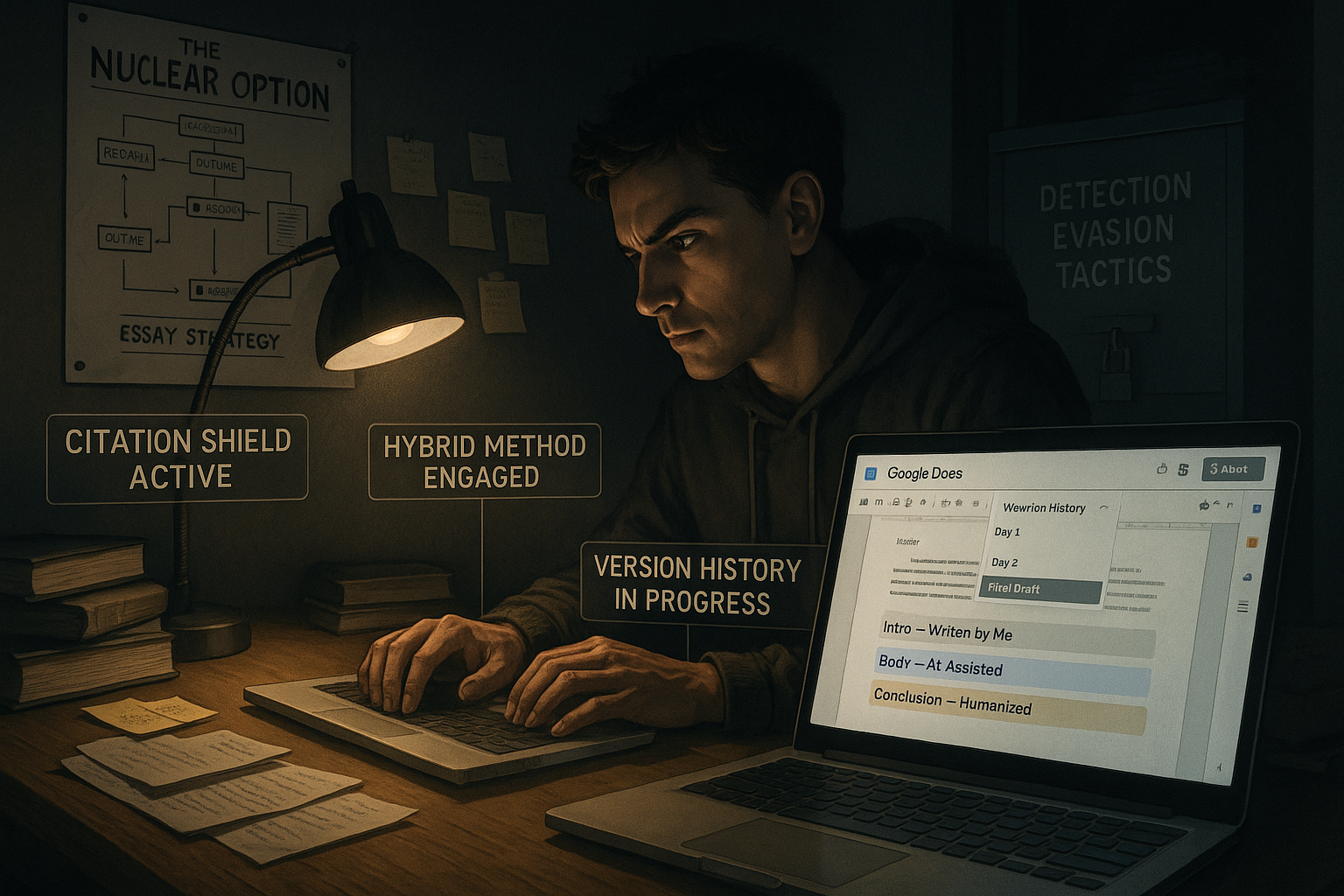
The Reality Check Nobody Wants to Hear
Here's the truth bomb: A January 2025 study found that AI detectors are "consistently inconsistent" - giving different scores to the SAME text on different days.
Your academic integrity isn't being protected by technology. It's being decided by a random number generator that costs more than your textbooks.
But here's the real question: If you can humanize AI text in 10 seconds, and detectors can't tell the difference, what are we really measuring? Your ability to write, or your ability to game a broken system?
Your professor spent 4 years learning to spot plagiarism. You just learned to make it invisible in 23 minutes.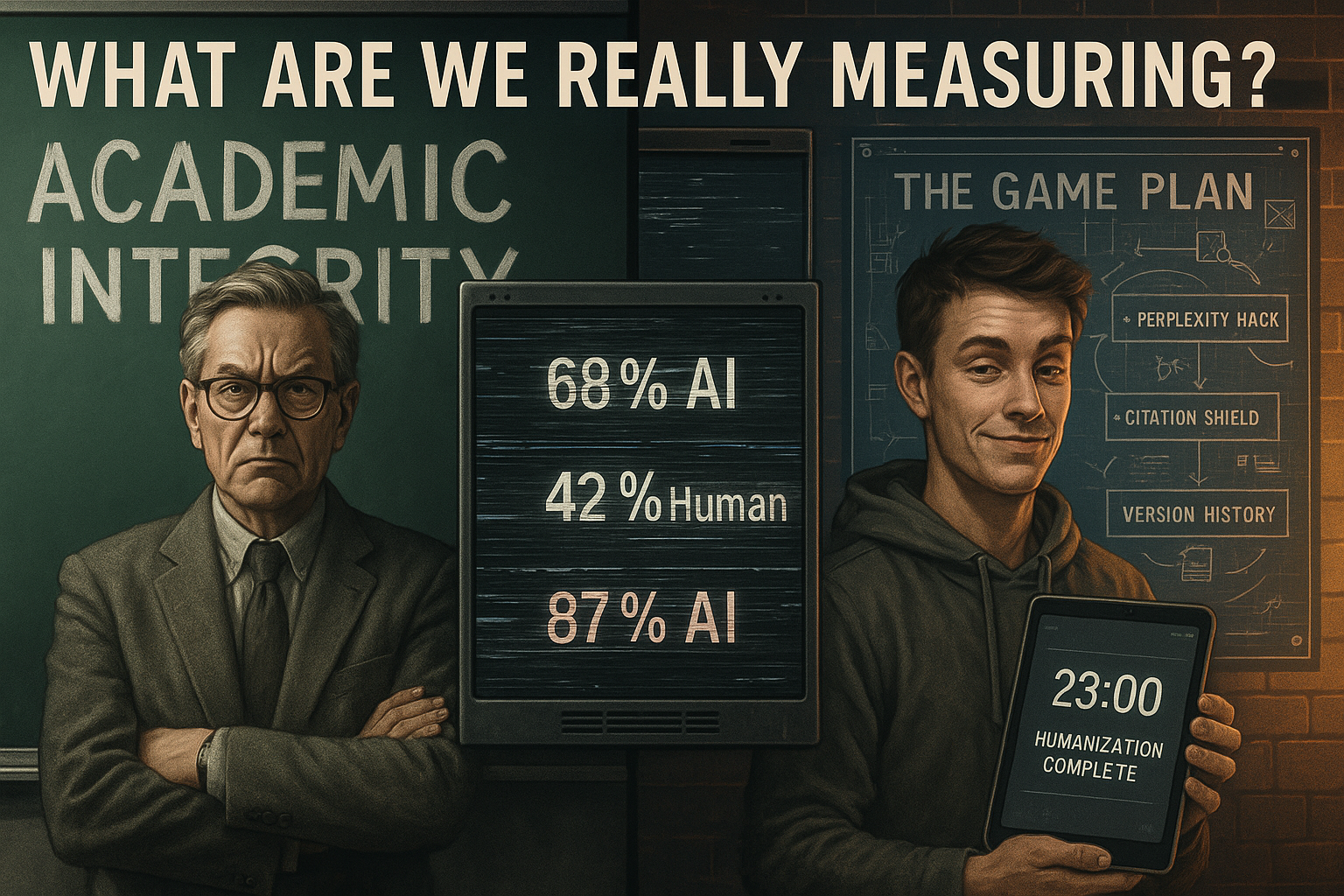
The Ryne.ai Advantage
Look, you could spend hours manually implementing all these techniques. Or you could use Ryne.ai's humanizer that does it all in one click. We're not just another tool - we're the tool that research from ResearchGate validates as the future of text humanization.The choice is yours: Spend 6 hours writing and still get flagged, or spend 6 minutes humanizing and move on with your life.
Welcome to 2025, where the students are smarter than the software designed to catch them.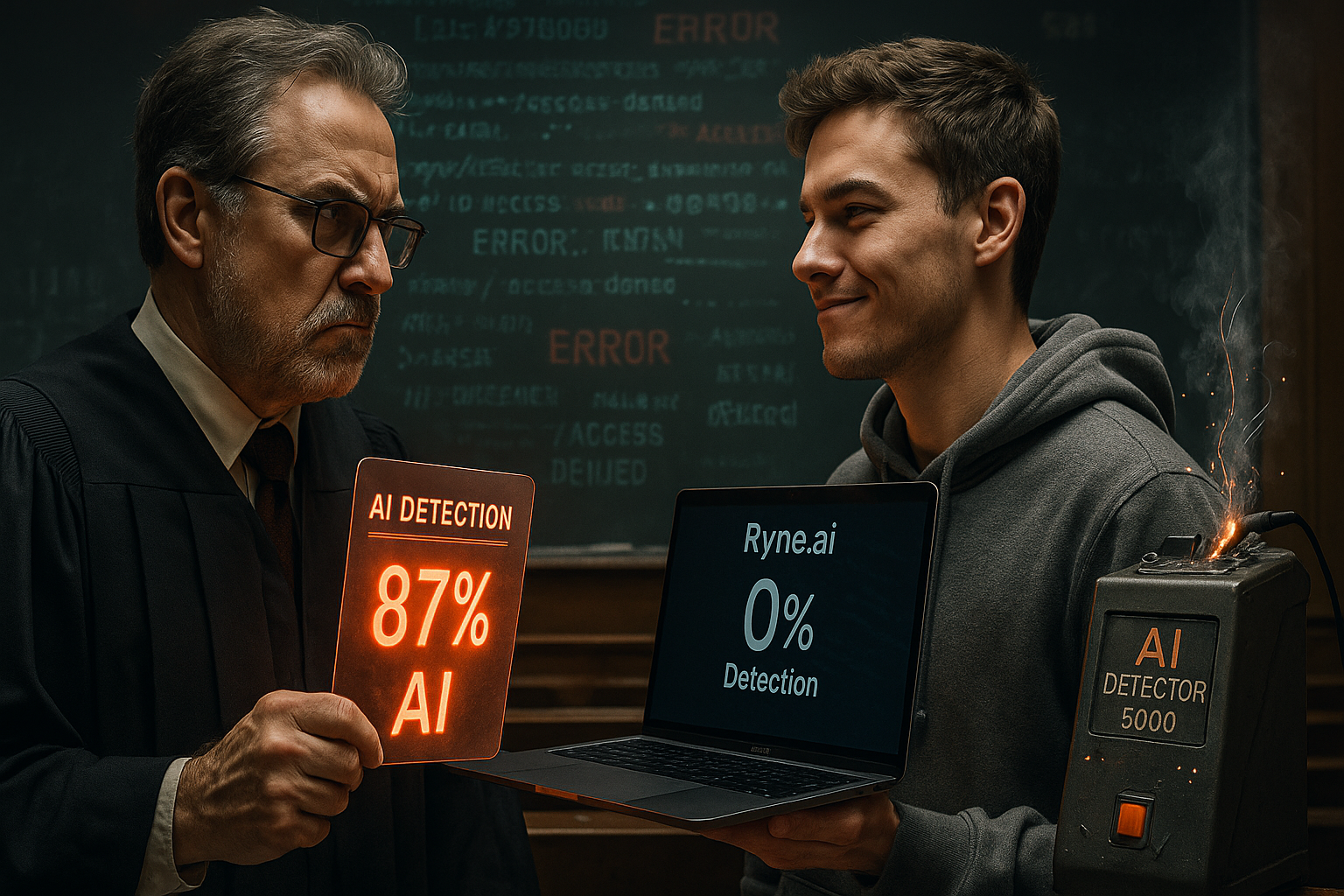
Remember: With great power comes great responsibility. Use these techniques ethically and always follow your institution's academic integrity policies. This guide is for educational purposes to understand how AI detection works (or doesn't).

Which is the best free AI humanizer?
Sick of your AI-generated content getting flagged faster than a Wikipedia edit by a power-hungry mod? Here's the dirty little secret professors don't want you to know: You can transform your robotic ChatGPT essays into undetectable human-written masterpieces in under 30 seconds.

Can University Tell If I Use ChatGPT?
The Truth Your Prof Doesn't Want You to Know Listen up. You're sitting there at 2 AM, staring at a blank document, wondering if you can get ChatGPT to write that essay due in 6 hours. But there's that nagging voice: "Can university tell if I use ChatGPT?" Here's the insider scoop that'll save your academic career—and maybe even teach you how to use AI without getting caught in the crossfire.

